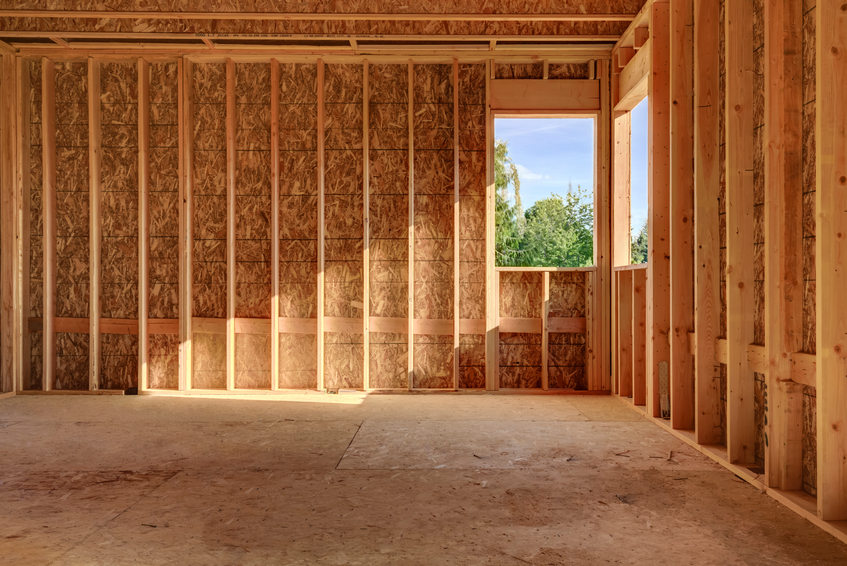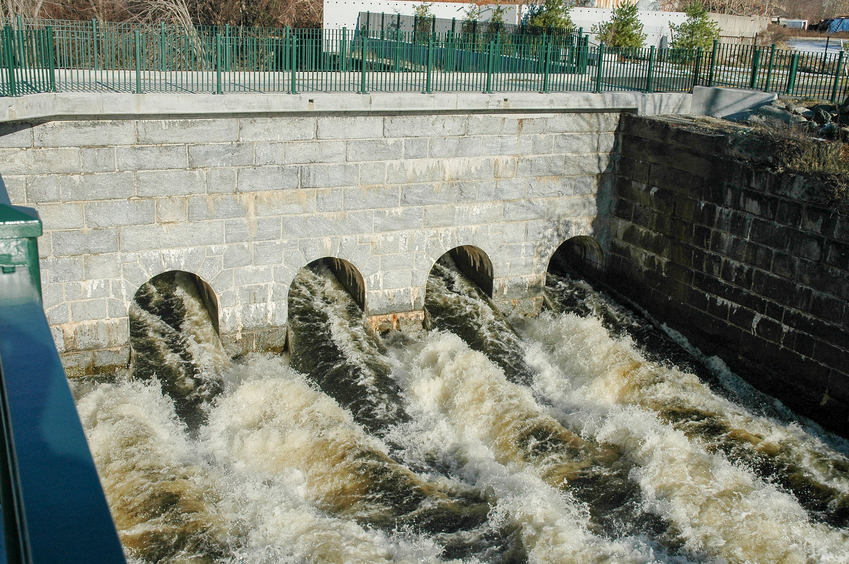Delaware Structural and Ethics 24 PDH Discount Package 2
Wood as An Engineering Material: Mechanical Properties of Wood (S04-019)
Wood as An Engineering Material: Fastenings (S03-019)
Wood as An Engineering Material: Adhesives with Wood Materials (S03-020)
Wood as an Engineering Material: Use of Wood in Buildings and Bridges (S02-025)
Wood as An Engineering Material: Fire Safety of Wood Construction (S02-020)
Wood as An Engineering Material: Wood as a Sustainable Building Material (S01-005)
Conduits, Culverts and Pipes - Design and Installation (S04-001)
Engineering Ethics Case Study: The Challenger Disaster (LE3-001)

This online engineering PDH course discusses the macroscopic physical properties of wood with emphasis on their relationship with moisture content.
Wood, like many natural materials, is hygroscopic; it takes on moisture from the surrounding environment. Moisture exchange between wood and air depends on the relative humidity and temperature of the air and the current amount of water in the wood. This moisture relationship has an important influence on wood properties and performance. Many of the challenges of using wood as an engineering material arise from changes in moisture content or an abundance of moisture within the wood.
This 2 PDH online course is applicable to civil, structural or geotechnical engineers, as well as design and construction personnel who are interested in gaining a better understanding in fire safety of wood construction or who are involved in the design and planning of wood structures.
This PE continuing education course is intended to provide you with the following specific knowledge and skills:
- Familiarizing with the different wood-moisture relationships
- Understanding the four thermal properties of wood
- Learning about the electrical properties of wood
- Understanding the friction properties of wood
In this professional engineering CEU course, you need to review Chapter 4, "Moisture Relations and Physical Properties of Wood" of the United States Department of Agriculture (USDA) Publication, “Wood Handbook - Wood as An Engineering Material”, FPL-GTR-190.
Once you complete your course review, you need to take a multiple-choice quiz consisting of fifteen (15) questions to earn 2 PDH credits. The quiz will be based on Chapter 4 of this USDA publication.
Upon successful completion of the quiz, print your Certificate of Completion instantly. (Note: if you are paying by check or money order, you will be able to print it after we receive your payment.) For your convenience, we will also email it to you. Please note that you can log in to your account at any time to access and print your Certificate of Completion.

This online engineering PDH course provides information on the most recent research on properties of the wood cell wall at the nanoscale level. It discusses the mechanical properties of wood, the nature and magnitude of variability in its properties as well as the effect of growth features.
Many of the mechanical properties of wood tabulated in this course were derived from extensive sampling and analysis procedures. These properties are represented as the average mechanical properties of the species. Some properties, such as tension parallel to the grain, and all properties for some imported species are based on a more limited number of specimens that were not subjected to the same sampling and analysis procedures. The appropriateness of these latter properties to represent the average properties of a species is uncertain; nevertheless, the properties represent the best information available.
This 4 PDH online course is applicable to civil, structural or geotechnical engineers, as well as design and construction personnel who are interested in gaining a better understanding in the mechanical properties of wood or who are involved in the design and planning of wood structures.
This PE continuing education course is intended to provide you with the following specific knowledge and skills:
- Understanding the orthotropic nature of wood
- Familiarizing with the elastic, strength, and vibration properties of wood
- Understanding the mechanical properties of clear straight-grained wood
- Learning the different natural characteristics affecting mechanical properties of wood
Upon successful completion of the quiz, print your Certificate of Completion instantly. (Note: if you are paying by check or money order, you will be able to print it after we receive your payment.) For your convenience, we will also email it to you. Please note that you can log in to your account at any time to access and print your Certificate of Completion.

This online engineering PDH course provides guidance on joint designs required for wood fastenings for utmost rigidity, strength, and service. It discusses each type of fastening requiring joint designs adapted to the strength properties of wood along and across the grain and to dimensional changes that may occur with changes in moisture content.
The strength and stability of any structure depend heavily on the fastenings that hold its parts together. One prime advantage of wood as a structural material is the ease with which wood structural parts can be joined together with a wide variety of fastenings such as nails, spikes, screws, bolts, lag screws, drift pins, staples and metal connectors of various types.
This 3 PDH online course is applicable to civil, structural or geotechnical engineers, as well as design and construction personnel who are interested in gaining a better understanding in wood fastenings or who are involved in the design and planning of wood structures.
This PE continuing education course is intended to provide you with the following specific knowledge and skills:
- Learning about the various types of mechanical fastenings
- Understanding the withdrawal and lateral resistance properties for different types of fasteners
- Learning about joint designs required for wood fastenings including spacing, edge and end distances
- Understanding the effect of fastenings on wood joint properties including bearing stress
- Understanding the different types of loading (parallel-to-grain, perpendicular-to-grain, and angle loading)
- Learning about two-member joints versus multiple-member joints
Upon successful completion of the quiz, print your Certificate of Completion instantly. (Note: if you are paying by check or money order, you will be able to print it after we receive your payment.) For your convenience, we will also email it to you. Please note that you can log in to your account at any time to access and print your Certificate of Completion.

This online engineering PDH course presents the types of adhesives and their properties, bonding processes, bonded joints, testing and performance. It discusses how adhesives can effectively transfer and distribute stresses, thereby increasing the strength and stiffness of the composite.
Adhesive bonding of wood plays an increasing role in the forest products industry and is a key factor for efficiently utilizing our timber resource. The main use of adhesives is in the manufacture of building materials, including plywood, oriented strandboard, particleboard, fiberboard, structural composite lumber, doors, windows and frames, and factory-laminated wood products. Adhesives are also used in the assembly of furniture and cabinets, manufacture of engineered wood products, and construction of residential and commercial structures.
This 3 PDH online course is applicable to civil, structural or geotechnical engineers, as well as design and construction personnel who are interested in gaining a better understanding in adhesive bonding of wood materials.
This PE continuing education course is intended to provide you with the following specific knowledge and skills:
- Understanding the physical properties of wood for bonding
- Learning about the different types of adhesives and their composition, strength, durability and selection
- Understanding the bonding process
- Learning about the various types of bonded joints
- Understanding the testing methods and performance of polymers and bonded assemblies
In this professional engineering CEU course, you need to review Chapter 10, "Adhesives with Wood Materials" of the United States Department of Agriculture (USDA) Publication, “Wood Handbook - Wood as An Engineering Material”, FPL-GTR-190.
Upon successful completion of the quiz, print your Certificate of Completion instantly. (Note: if you are paying by check or money order, you will be able to print it after we receive your payment.) For your convenience, we will also email it to you. Please note that you can log in to your account at any time to access and print your Certificate of Completion.

This online engineering PDH course describes the features of various types of building systems. It places emphasis on how these systems have adapted to the use of modern materials and techniques.
In North America, most housing and commercial structures built prior to the 20th century used wood as the major structural material. The abundant wood resource formed the basic structure for most houses, commercial buildings, bridges, and utility poles. Today, houses and many light commercial and industrial buildings are made using modern wood structural materials. Recently, there has been increased interest in using wood for various types of transportation structures, including highway bridges. Furthermore, prefabricated floor and wall panels along with prefabricated roof and floor trusses or I-joists are replacing piece-by-piece on-site construction with dimension lumber.
This 2 PDH online course is applicable to civil, structural or geotechnical engineers, as well as design and construction personnel who are interested in gaining a better understanding in use of wood in buildings and bridges.
This PE continuing education course is intended to provide you with the following specific knowledge and skills:
- Understanding of light-frame building type construction
- Understanding of post-frame and pole building type construction
- Understanding of log and heavy timber building type construction
- Understanding of timber bridge type construction
- Application of thermal insulation controls, air filtration controls, moisture and sound controls to the construction of wood structures
Upon successful completion of the quiz, print your Certificate of Completion instantly. (Note: if you are paying by check or money order, you will be able to print it after we receive your payment.) For your convenience, we will also email it to you. Please note that you can log in to your account at any time to access and print your Certificate of Completion.

This online engineering PDH course discusses the fire safety code requirements along with the related fire performance data of wood in construction and provides information on fire behavior and fire performance characteristics of wood products.
Fire safety is an important concern in all types of construction. The high level of national concern for fire safety is reflected in limitations and design requirements in building codes. These code requirements and related fire performance data are discussed in the context of fire safety design and evaluation in the initial section of this course. Because basic data on fire behavior of wood products are needed to evaluate fire safety for wood construction, the second major section of this course provides additional information on fire behavior and fire performance characteristics of wood products. The course concludes with a discussion of fire-retardant treatments that can be used to reduce the combustibility of wood.
This 2 PDH online course is applicable to civil, structural or geotechnical engineers, as well as design and construction personnel who are interested in gaining a better understanding in fire safety of wood construction or who are involved in the design and planning of wood structures.
This PE continuing education course is intended to provide you with the following specific knowledge and skills:
- Familiarizing with the fire safety design and evaluation process of wood in construction
- Understanding the different fire safety code requirements and regulations
- Understanding the different fire-performance characteristic of wood
- Learning the characteristics and benefits of fire-retardant treated wood
Upon successful completion of the quiz, print your Certificate of Completion instantly. (Note: if you are paying by check or money order, you will be able to print it after we receive your payment.) For your convenience, we will also email it to you. Please note that you can log in to your account at any time to access and print your Certificate of Completion.

This online engineering PDH course illustrates how wood is considered as a sustainable building material.
Few building materials possess the environmental benefits of wood. It is not only the most widely used building material but also one with characteristics that make it suitable for a wide range of applications.One of the greatest attributes of wood is that it is a renewable resource. If sustainable forest management and harvesting practices are followed, wood resources will be available indefinitely.
This 1 PDH online course is applicable to civil, structural or geotechnical engineers, as well as design and construction personnel who are interested in gaining a better understanding in wood as a sustainable building material or who are involved in the design and planning of wood structures.
This PE continuing education course is intended to provide you with the following specific knowledge and skills:
- Learning how wood is considered aGreen Building Material
- Understanding the concept of Embodied Energy
- Learning the Carbon Impact of different materials
- Familiarizing with the different Forest Certification Programs
Upon successful completion of the quiz, print your Certificate of Completion instantly. (Note: if you are paying by check or money order, you will be able to print it after we receive your payment.) For your convenience, we will also email it to you. Please note that you can log in to your account at any time to access and print your Certificate of Completion.

This online engineering PDH course provides guidance on the design and construction of conduits, culverts, and pipes, as well as design procedures for trench/embankment earth loadings, highway loadings, railroad loadings, surface concentrated loadings, and internal/external fluid pressures.
In general, reinforced concrete conduits, culverts and pipes are used for dams, urban levees, and other levees where public safety is at risk or substantial property damage could occur. Corrugated metal pipes are acceptable through agricultural levees where conduits are 900-mm (36-in.) diameter and where levee embankments are not higher than 4 m (12 ft) above the conduit invert. Inlet structures, intake towers, gate wells, and outlet structures are usually concrete. However, corrugated metal structures may be used in agricultural and rural levees.
This 4 PDH online course is applicable to civil, structural and geotechnical engineers, as well as design and construction personnel involved with the design and installation of conduits, culverts and pipes.
This PE continuing education course is intended to provide you with the following specific knowledge and skills:
- Design and installation of cast-in-place conduits for dams
- Design and installation of circular reinforced concrete pipe for small dams and levees
- Design and installation of corrugated metal pipe for rural levees and culverts
- Design and installation of concrete culverts
- Design and installation of plastic pipe for other applications
- Design and installation of ductile iron and steel pipe for other applications
- Design and construction guidelines for pipe jacking
In this professional engineering CEU course, you need to review the US Corps of Engineers Publication EM 1110-2-2902, "Conduits, Culverts and Pipes".
Upon successful completion of the quiz, print your Certificate of Completion instantly. (Note: if you are paying by check or money order, you will be able to print it after we receive your payment.) For your convenience, we will also email it to you. Please note that you can log in to your account at any time to access and print your Certificate of Completion.

This online engieering PDH course provides instruction in engineering ethics through a case study of the Space Shuttle Challenger disaster. The minimum technical details needed to understand the physical cause of the Shuttle failure are presented. The disaster itself is chronicled through NASA photographs. Next the decision-making process, especially the discussions occurring during the teleconference held on the evening before the launch, is described. Direct quotations from engineers interviewed after the disaster are used to illustrate the ambiguities of the data and the pressures that the decision-makers faced in the months and hours preceding the launch. The course culminates in an extended treatment of six ethical issues raised by Challenger.
This 3 PDH online course is intended for all engineers who are interested in gaining a better understanding about the ethical issues that lead to the Challenger disaster and how they could have been avoided.
This PE continuing education course is intended to provide you with the following specific knowledge and skills:
- Common errors to avoid in studying the history of an engineering failure: the retrospective fallacy and the myth of perfect engineering practice
- Shuttle hardware involved in the disaster
- Decisions made in the period preceding the launch
- Ethical issue: NASA giving first priority to public safety over other concerns
- Ethical issue: the contractor giving first priority to public safety over other concerns
- Ethical issue: whistle blowing
- Ethical issue: informed consent
- Ethical issue: ownership of company records
- Ethical issue: how the public perceives that an engineering decision involves an ethical violation
In this professional engineering CEU course, you need to review the course document titled, "Engineering Ethics Case Study: The Challenger Disaster".
Upon successful completion of the quiz, print your Certificate of Completion instantly. (Note: if you are paying by check or money order, you will be able to print it after we receive your payment.) For your convenience, we will also email it to you. Please note that you can log in to your account at any time to access and print your Certificate of Completion.